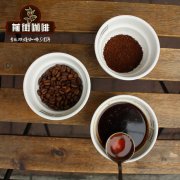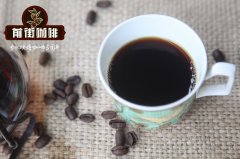What are the treatments for raw coffee beans? what are the differences in flavor between them?

Natural solarization
The process of this method is the simplest. The fruit begins the process of sun drying without treatment after picking. This is the oldest method of treatment in existence. This method is still used in places such as Ethiopia and Brazil. Natural solarization is most common in areas where water resources are scarce. The drying process usually lasts about 4 weeks. The method of handling must be very strict to ensure that the coffee does not lose any flavor. The natural sun method requires the local climate to be extremely dry. In some areas, people use dryers to assist in the drying process of coffee fruit (the hot air of the dryer can speed up the drying process and help people control the degree of drying).
Natural sunlight can retain the fruity aroma of coffee fruit. When you taste this kind of coffee, you will find that the coffee has a fruity aroma and a brighter taste. After drying, people will use special machines to remove the shell of the surface layer. This process is called drying and shelling (Dry Milling). Treatment process
First pour the coffee beans into a large tank, and the poorly developed beans will float on the surface and pick up the ripe and full fruits that sink to the bottom of the water.
The tile is exposed to the sun, often flipped over, picking out defects.
When the water content in the coffee beans is reduced to 10%-14%, the peel pectin can be knocked off with a sheller, and the whole solarization method is complete. Shortcoming
The sun method depends entirely on the weather, and the dryness of coffee fruit is difficult to control. If the sun is not clean, it is easy to mix with impurities. In the process of the sun, the pulp of the coffee fruit has not been removed, so it is often moldy and rotten. Therefore, in the view of many people, the quality of sun-exposed coffee beans is not controllable and the level is not too high. Advantages
Except for the first step of using water to filter out inferior beans, the other steps no longer need any water, and can be used repeatedly. In areas where water resources are not abundant, this method is simply awesome.
And because sun-dried beans have irreplaceable special flavor, some excellent farms begin to take sun-dried beans seriously, such as putting them on shelves to prevent pollution and fine selection, so today we can see a lot of high-quality sun-dried coffee beans.
Flavor
Although the sun-cured beans are uneven in appearance and different in color, because the coffee beans ripen naturally inside the fruit and are not disturbed by the external environment, the sun-cured coffee beans have a stronger flavor, wine-like fermented taste and sweet taste. Washing method
Wash and wash out the sour taste. Use the pulping machine (pulp planer) to remove the peel and pulp of the coffee fruit.
Due to the shortcomings of solarization, 18 treatment process
As in the first step of solarization, get rid of shoddy beans first.
Then throw it into the sink to ferment for 16-36 hours, and the fermentation bacteria dissolve the pectin.
In order to remove the residue of fermentation bacteria and impurities, the coffee beans will be washed again.
The coffee fruit is then dried by machine so that the moisture content is reduced to 10% Murray 14%. Finally, the use of shelling machine to remove the silver skin on the coffee beans can be completed.
In the middle of the century, the Dutch invented water washing treatment, which was widely favored. The biggest difference from the sun method is that it uses fermentation to remove the skin. Shortcoming
Water washing, as its name implies, mostly requires water, but it is unlikely to be adopted in some countries that lack water resources. The process of washing is also relatively cumbersome and the cost is much higher than that of tanning.
Advantages
After layers of screening and cleaning, the appearance and taste will be cleaner and more uniform. And because the flesh is removed in the first place, you don't have to worry about mildew as much as the sun.
Flavor
Washed beans usually have bright and clean acidity because they ferment acid in the fermentation tank. Natural washing method
This method is extremely common in Brazil. The natural washing method is very similar to the water washing method, except that the natural washing method uses a high-pressure washing machine to remove the mucous membrane of the coffee surface, thus skipping the fermentation process. Several raw coffee processing companies in Brazil and Colombia have patented this method and have become local natural water system processing monopolies. The amount of water used in this method is much lower than that of washing hair, so some people are used to calling it "semi-drying (Semi-Dry)". Because there is no fermentation, coffee beans do not exist (or only have a very low risk of fermentation), and the overall quality of coffee is more constant. Unfortunately, the taste of coffee tends to be flat because it is not fermented. As a result, growers will not use natural washing for ultra-high quality coffee beans. Most raw bean purchasing companies also rarely buy coffee processed by natural washing. Honey treatment method
Honey treatment is used in almost all the producing areas of Costa Rica. This method is also widely spread throughout Central America. Because the surface mucosa of coffee beans is extremely slippery and the sugar content is extremely high, it is often called "honey". In the process of honey treatment, coffee will leave some or all of the "honey" when it is dried. After the coffee fruit is picked, graded and peeled, it is placed on a drying bed to dry.
Because the drying time of the mucous membrane is very short, coffee beans hardly ferment during the drying process. The acidity of coffee beans processed by this method is slightly higher than that of natural washing, but much lower than that of natural washing and natural sun processing. There are many kinds of honey treatment methods-- red honey and black honey.
Important Notice :
前街咖啡 FrontStreet Coffee has moved to new addredd:
FrontStreet Coffee Address: 315,Donghua East Road,GuangZhou
Tel:020 38364473
- Prev

Barrel fermented Coffee processing Technology | how about barrel fermented coffee? Introduction to fermented Coffee in barrel
Professional coffee knowledge exchange more coffee bean information Please pay attention to the coffee workshop (Wechat official account cafe_style) barrel fermented coffee can be said to be a hot way of treatment in recent years, then how about this technology of barrel fermentation processing coffee? What kind of flavor will appear? [refined washed whisky Shirley barrel fermentation treatment] Shirley barrel is a whisky line.
- Next

The Story of the Mocha Pot | introduction to the unpopular Mocha Pot Coffee | Operation method and process of the Mocha Pot
Professional coffee knowledge exchange more coffee bean information please follow the coffee workshop (Wechat official account cafe_style) how to have a cup of espresso at home? Buy an Italian coffee maker? Or Qianjie Coffee today, I would like to introduce to you a coffee appliance that is very common in European families, the mocha pot! So you can simply make a cup of espresso at home.
Related
- What is the meaning of lactic acid fermentation with coffee bean treatment?
- How to judge the state of foam by sound?
- How does the latte pull out the unicorn pattern? Come to get for a little trick to improve the flower pull!
- Will flower pulling affect the taste of the latte?
- Do you know the history of coffee?
- The difference between honey treatment and sun washing what is raisin honey treatment?
- What kind of milk can a novice use to make coffee foam to keep the foam longer? The correct method and skills of milking tutorial sharing
- Why do washed coffee beans taste sour? Flavor characteristics of washed Coffee
- Introduction to the skill of how to practice the size and height of water injection around the circle of hand-brewed coffee
- How do beginners practice coffee flower drawing from scratch?

